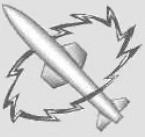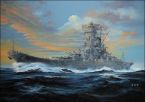Bullwinkle58
Posts: 11302
Joined: 2/24/2009
Status: offline

|
quote:
ORIGINAL: Don Bowen
To answer a couple of questions:
The Line of Departure is randomly selected within the range of historical distances. We checked a number of the major amphibious invasions in the Pacific and tallyed up the line of departure data that we could find. A patern developed and we set up a random distance calculator to approximate it. Quite an interesting thread on it in the development forum.
I suspect that higher than historical losses are largely caused by non-historical invasions. I would cite lack of proper preparation, too weak amphibious TFs, improper ships for the job, and target locations that are either over developed by the opponent or a difficult historical choice.
It is entirely possible that additional tuning might be required. However, it is the process in AE (and other games that I know of) to use some sort of random to generate different results each time the game is played. Randoms also give the "benefit" of a chance of unusual outcomes - the outnumbered winning, etc. Simply put, it's a bitch to tune random events. Besides, the amphibious invasion routines are just meant to emulate the process, not duplicate history to the finest detail.
I've seen some LOD data for LSTs in mid-late war that is on the order of 3000 yards when using amtracs. The exposure time and seasickness factor had to be measured against threat to the LSTs. I figure APAs were probably a bit farther out when using larger L-class landing variants.
My experience with (now ) many opposed invasions isn't that the LOD needs tuning, but rather, simply, when the player DOES do everything right, especially pre-bombardment and use of CAS assets, that the CD units be more suppressed than they are now. I think those LSTs could come into 3000 yards and survive because the gunners ashore in non-casemated open mounts were either dead or in bunkers.
I don't know how randoms work in the naval bombardment and air-to-port attack routines, but perhaps just a bit more chance to knock the CD units back/disrupt on the day of the landing would balance things out. I think that Japanese CD LCUs with the "fortress" descriptor might be immune to this, while garden-variety CD units could take more of a beating from a solid force of BBs in 1943-45.
Perhaps this could be accomplished with fewer coefficient or random number changes than any tuning of LOD code?
< Message edited by Bullwinkle58 -- 6/1/2010 8:24:08 PM >
_____________________________
The Moose
|
 Printable Version
Printable Version





















 I'm no expert on this subject but it seems to me that, historically, there was a distinction between coastal defence guns and beach defence guns; I don't know if this is modelled in the game. The former were intended to engage ships far out to sea and for this purpose required complicated range-finding and gun laying equipment. (In occupied Europe they were controlled by the German Navy; the Army was responsible for the beach defence guns.) True coastal defence batteries were usually sited to protect naval bases, major ports and strategic waterways from seaborne attack; for this reason, amphibious forces usually avoided such places like the plague! (Imagine if the Allies had tried to launch a direct assault on Le Havre, for example.
I'm no expert on this subject but it seems to me that, historically, there was a distinction between coastal defence guns and beach defence guns; I don't know if this is modelled in the game. The former were intended to engage ships far out to sea and for this purpose required complicated range-finding and gun laying equipment. (In occupied Europe they were controlled by the German Navy; the Army was responsible for the beach defence guns.) True coastal defence batteries were usually sited to protect naval bases, major ports and strategic waterways from seaborne attack; for this reason, amphibious forces usually avoided such places like the plague! (Imagine if the Allies had tried to launch a direct assault on Le Havre, for example. ) In WitP the hexes are 40nm across, so an attacker could be some distance from the base and still be in the same hex. I still think the CD gun effects in the game are about right, however, in that they discourage invasions of major enemy bases without adequate preparation.
) In WitP the hexes are 40nm across, so an attacker could be some distance from the base and still be in the same hex. I still think the CD gun effects in the game are about right, however, in that they discourage invasions of major enemy bases without adequate preparation.
 New Messages
New Messages No New Messages
No New Messages Hot Topic w/ New Messages
Hot Topic w/ New Messages Hot Topic w/o New Messages
Hot Topic w/o New Messages Locked w/ New Messages
Locked w/ New Messages Locked w/o New Messages
Locked w/o New Messages Post New Thread
Post New Thread